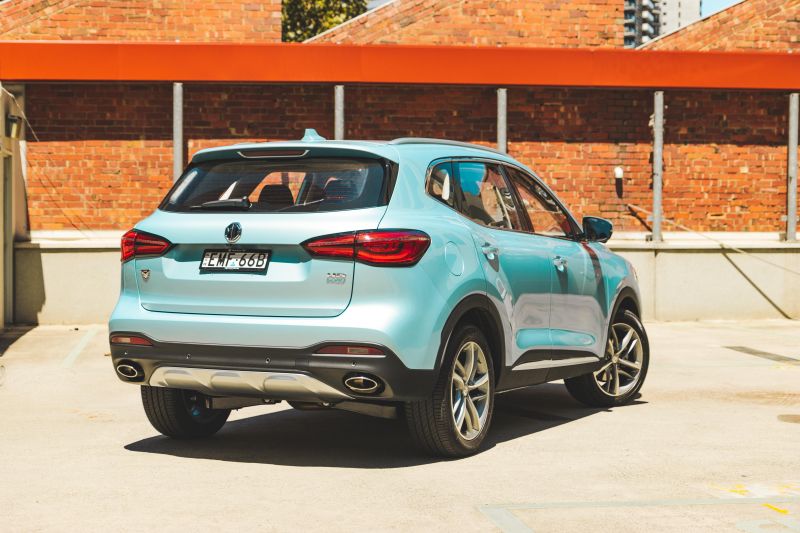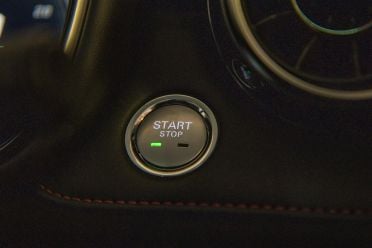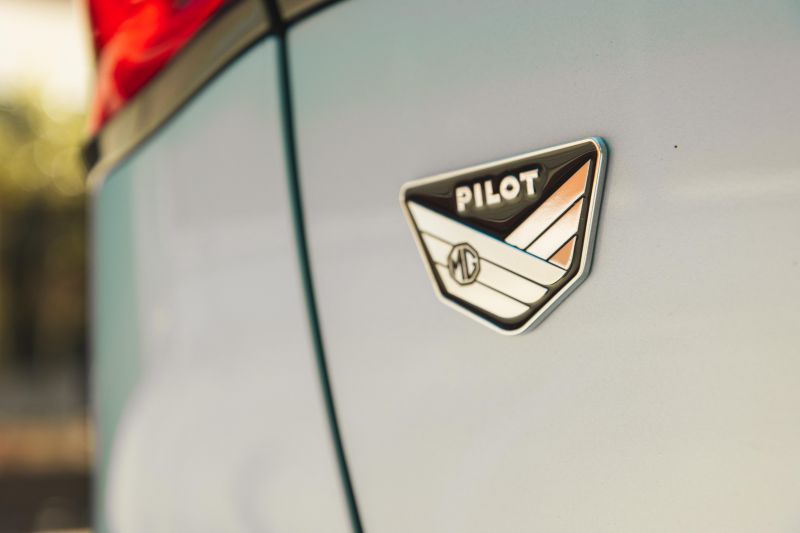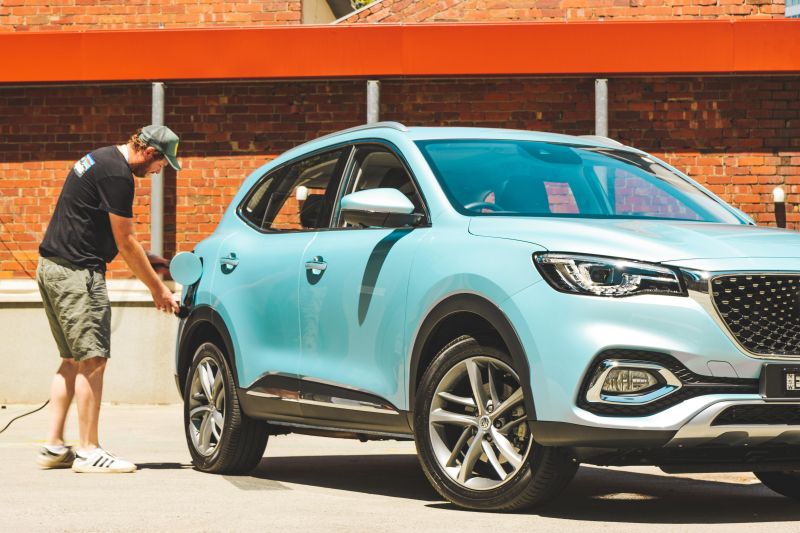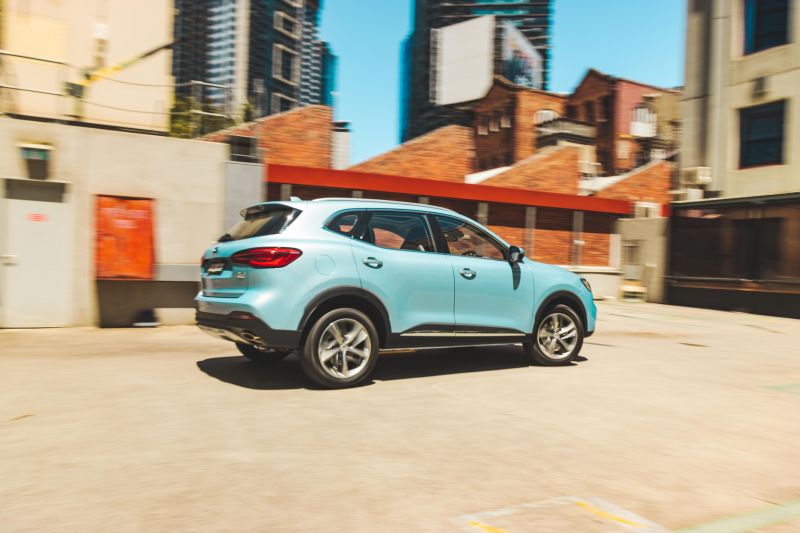The MG HS Plus EV – don’t let the name fool you, it’s not what we usually call an ‘EV’ – looks to be the best-value plug-in hybrid SUV on sale, and is therefore primed for a big role popularising this drivetrain technology among Australian buyers.
Mitsubishi might have made itself synonymous with PHEV technology, but its Eclipse Cross and Outlander have some overdue competition on their hands in this car, plus myriad others detailed in more depth here.
MG’s family friendly five-seater offers enough purely electric driving range for most daily commutes, with the reassurance of a petrol engine backup for longer journeys where charging isn’t readily available.
There’s an argument that this mid-point between the enormously popular Toyota RAV4 conventional hybrid, and a proper electric vehicle like a Tesla (or MG’s own ZS EV), is the best compromise for many Aussies.
No doubt for a certain type of buyer, it’s a setup with a lot of promise. Especially at such a comparatively keen price, with contemporary style and interesting Clipper Blue paint. That Mazda-like concave grille in particular makes a good impression.
For those who aren’t aware, MG is a brand in a hurry, having finished ninth on the sales charts in 2021 and overtaking the likes of Subaru and Honda in the process – something no other Chinese brand has done before it.

How much does the MG HS Plus EV Essence cost?
At the time of writing there was just the one specification grade available, called the HS Plus EV Essence, priced at $47,990 drive-away ($45,990 before on-road costs). A new entry-level HS Plus EV Core has been confirmed for an early-2022 launch, though the specifics haven’t been confirmed as yet.
The nearest rival is the Mitsubishi Eclipse Cross PHEV in entry ES guise at $49,990 drive-away – though this vehicle is neither as roomy or well-specified as the MG.
It also lines up neatly alongside the simpler 2022 Toyota RAV4 XSE Hybrid ($48,000 drive-away) on Toyota’s website, though this vehicle cannot do daily electric-only driving like the MG can.
To give the MG’s pricing a little more context, the similarly-sized Peugeot 3008 GT Sport PHEV is an eye-watering $79,990.
What do you get?
The single spec level is well specified.
On the outside there are features such as:
- 18-inch alloy wheels
- Michelin Primacy tyres
- Tyre-repair kit (no spare)
- Panoramic sunroof
- Proximity key access
- Powered tailgate
- LED headlights with manual height adjustment
- LED daytime running lights
- Sequentially animated LED tail lights
- Rain-sensing wipers
- Branded puddle lamps
- Roof rails
On the inside you get:
- Push-button start
- 10.1-inch touchscreen
- Wired Apple CarPlay and Android Auto
- 360-degree parking cameras
- Satellite navigation
- 4 x cabin USB-A points
- Leatherette/suede seat trim
- Heated and powered front seats
- Coloured LED interior lighting
- Dual-zone climate control
- 12.3-inch digital instrument cluster
Is the MG HS Plus EV Essence safe?
While all petrol-only versions of the MG HS achieve the maximum five-star ANCAP crash rating (2019 date stamp), the PHEV model is unfortunately unrated.
This does not mean they’re less safe, it simply means that this version has not had its data processed against the safety tester’s metrics.
It is definitely well-equipped with safety features, which include:
- Front, front-side, two-row curtain airbags
- Autonomous emergency braking – forward
- Adaptive cruise control
- Forward collision warning
- Lane departure warning
- Active lane-keeping aid with steering assist
- Blind-spot monitoring
- Rear cross-traffic alert
When driving on highways and the like, the MG has the ability to match the speed of the vehicle ahead, and the steering wheel will nudge the car back between road lines if you stray off the right line.
The systems actually seemed to work at least as well as most, with the radar cruise slowing and speeding up of its own accord, and the lane assist usually reading the road lines well enough. You can also permanently turn off all the irritating beeps and chimes, as I did.
To activate the radar cruise control you pull the small stalk under the indicator, which flicks the driver instrument screen to an active safety home page. I’d prefer it if you could adjust the cruise control speed without the cluster screen exiting your trip computer view.
You can turn the lane-keeping aids on or off via the touchscreen, with a rocker switch below setup to take you straight to the right menu. Again, a simple button on the wheel would be a more immediately intuitive solution to turning this system on or off.
What is the MG HS Plus EV Essence like on the inside?
The doors open and close with sufficient heft, meaning they don’t feel tinny. That’s one cost-cutting aspect out of the way.
The seats look great, trimmed in passable fake leather with nice stitching, plenty of padding and bolstering, and some suede inserts atop the one-piece backrest.
The steering wheel (a tasteful number with damped buttons) has telescopic adjustment unlike the ZS, but it was a challenge to get a perfect driving position nailed down for a few of our team, including 200cm+ Scott Collie.
The large and crisp digital cluster behind the wheel has good resolution and some cool animations of the drivetrain’s processes. There’s a tachometer buried in sub menus but I’d prefer one affixed there permanently.
The materials are pretty good, with plenty of padded and tastefully perforated surfaces and VW Group-like switches on the doors. MG’s parent SAIC company makes Volkswagens for the Chinese market…
Between that and the ambient lighting, MG has made a real effort at adding some glamour, which will resonate in showrooms for the uninitiated. I’m not so sure about the luminous red puddle lamps from the side mirrors though.
Everything is screwed together relatively well, though the centre tunnel and screen’s frame do let out some squeaking if you give them a hard time. Will it hold up? Jury is still out.
The touchscreen is big and bright and has decent graphics with consistent fonts, plus it offers crisp enough audio quality on phone calls or when streaming. There’s also phone mirroring as well as conventional navigation, neither of which bugged out.
A series of plastic rocker switches below direct you to the home menu or vehicle settings menus, and another directs you right to the climate-control screen where you adjust the temperature and fan directions via touch.
The problem is the processing speeds are too slow, so the time between pressing said button and subsequently seeing the requested menu screen passes glacially in some instances. It’s a frustration that would be fixed with a better processor, I’d imagine.
Same goes for the instrument cluster on startup, the activation of the (grainy-resolution) 360-degree camera, or the navigation’s loading – all are made less user-friendly because of lag.
Storage options include a slim phone holder along the tunnel next to cupholders and ahead of a closing console, bottle holders in the doors, a closing section below the centre fascia, a glovebox, and a sunglasses holder in the roof.
The back seats are excellent. This HS isn’t especially large (similar to the Mazda CX-5, Toyota RAV4), yet my 194cm frame had copious legroom, foot room and shoulder room behind my own driving position, and even good headroom despite the presence of a panoramic sunroof.
Said glass roof is cool, except the flimsy cloth cover is not as good under the baking Aussie sun as a more rigid, fully light-blocking solution.
Rear occupants have two USB points, a centre armrest with cupholders and a flocked console, damped grab handles and reading lights. The seats also have two-stage reclining.
Boot capacity as accessed by the slow, powered tailgate is 451L, which is moderate by class standards, but only 12L less than the HS petrol model. It’s also 46L more capacious than the Eclipse Cross’s boot.
All told, an update bringing quicker-loading screens and a more inclusive driving position would go a long way to making this interior a home run. It doesn’t feel cheap despite the odd trim squeak, and looks very nice indeed.
| Length | 4574mm |
| Width | 1876mm |
| Height | 1685mm |
| Wheelbase | 2720mm |
| Boot minimum | 451 litres to cargo cover |
| Boot maximum | 1275 litres to window line |
What’s under the bonnet?
The MG HS Plus EV combines a 1.5-litre turbocharged petrol engine making 119kW and 250Nm mated to a 10-speed automatic transmission, with a 90kW/230Nm electric motor powered by a 16.6kWh battery.
The maximum combination output at the peak is a meaty 189kW of power and 370Nm torque, meaning it’s among the most powerful mainstream medium SUVs on sale. The claimed 0-100km/h dash time is a hot-hatch-rivalling 6.9 seconds.
It’s front-wheel drive only, so don’t go planning any soft-road adventures.
MG claims a 63km pure-electric range but in reality about 50-55km is right, with greater efficiencies to be found in stop/start driving where brake-energy recuperation does its part.
The ADR-approved combined-cycle fuel economy is 1.7L/100km, but like with all PHEVs this is a slippery figure with zero relevance. That’s not MG’s fault, that’s the fault of our fuel efficiency measuring system.
In reality, we saw consumption of around 7-7.5L/100km once the drive battery was flat, and the car reverted to a sort of mild-hybrid mode (a-la a RAV4 Hybrid), relying principally on the engine with some e-motor assistance at low speed and low-stress drivetrain moments.
This functions because even if the drive battery has insufficient useable charge to drive the vehicle as an EV, it retains enough juice to help out the engine at ‘idle’, in reverse, and when you’re coasting off-throttle.
Thus while you do not need to charge a PHEV from a powerpoint to drive it – ever, if you wish – it’s pointless if you don’t, because it simply reverts to being a mild-hybrid lugging around a heavier, pricier battery pack for no cause.
In terms of recharging, a 7kW home wallbox will recharge the battery from flat in 5 hours. I just charged it from a bog standard powerpoint at home though, and that took 8.5 hours. So, you just get into the habit of charging overnight as with all your other myriad devices. Simple.
If you street park and don’t have access to a charge point at the office, I’d say you’re better off looking at something else, rather than a PHEV.
A charging cable with Type 2 attachment at one end and a three-prong at the other is supplied, and lives below the boot floor next to the tyre repair kit.
How does the MG HS Plus EV Essence drive?
The PHEV drivetrain is as complex as you make it.
My loop began with a full charge, and pressing a button near the gear shifter labelled ‘EV’ essentially tells the engine to stay off until there’s no charge left.
I did a 54km urban-biased loop across Melbourne using not one drop of petrol, coasting in smooth and silent electric mode leveraging the subtle brake-recuperation on lift-off.
That’s not the NEDC claim of 63km but is pretty serviceable – greater than a much more expensive Volvo XC60 T8 PHEV for instance (though an updated model with more range is coming).
The next stage of the journey saw a trip computer reset and a mixed highway and urban loop with the drive battery at zero per cent charge.
Here is where there’s evidence that MG needs to make a few tuning tweaks, with the petrol engine feeling and sounding a little coarse (vibrations and sound). That said, the fact it switches off and uses electric propulsion when coasting and off the mark helps a great deal.
My fuel economy in this setup was 7.4L/100km, which falls well shy of a RAV4 Hybrid principally because the MG has to carry around a weighty 16.6kWh battery pack.
The point though, is that it’s perfectly driveable without being charged, unlike a full EV.
The ‘default’ driving setup, though, is to depart with a full charge in the morning but let the car’s computer brain determine when to use electricity (most of the time when there’s charge) and when to use petrol (heavy acceleration, up hills, and the like).
You can select two different modes through the touchscreen but I just let the car decide for itself, as most owners will.
In this instance you’ll retain charge for longer because the petrol engine helps out. My average economy over 300km of driving with a few recharges thrown in dipped below 5.0L/100km.
This is why PHEVs are so contingent on how often you charge and where you drive: the 1.7L/100km claim is achievable over a 70-80km loop if you have a full charge to begin with and are stopping and starting enough to tap into the brake-energy recuperation.
The main gripe I had was the fact that the power delivery of the two systems isn’t entirely linear, meaning you leap off the line with instant electric torque, then run out of puff, then get a second surging wind at around 90km/h.
The interaction of petrol and electricity just needs some new coding to be a little smoother, in my opinion. It’s here where Mitsubishi has an edge – it’s neither quicker or more efficient really, but it feels more cohesively and smoothly tuned.
That 6.9 second 0-100km/h is optimistic, but the positive trade-off is that it doesn’t easily axle tramp or torque steer off the mark like many powerful FWD cars do.
In terms of dynamics, the steering felt weighty but fine for my tastes, and the handling kept body roll largely at bay on account of the low centre of gravity created by the floor battery. The Michelin Primacy tyres are good quality too, and the brake pedal felt progressive.
The main downside is the ride quality over sharp inputs like potholes, expansion joints, or big speed bumps, with occupants feeling a noticeable thud or jarring through the seat. Again, a quick re-tune would sort this out pronto.
How much does the MG HS Plus EV cost to run?
MG knows that it can’t conquer the market with cheap prices alone. New-to-market brands generally lack cred, and their resale values tend to suffer as a result. You simply shouldn’t expect Toyota-like residuals.
However, the excellent seven-year and unlimited-kilometre warranty offers reassurance. MG Australia also offers roadside assist membership for if the proverbial hits the fan. Given there’s no spare tyre of any sort (just a patch kit and compressor), that’s a good thing.
MG also offers seven years of capped service prices, though the 10,000km (or annual) intervals are on the short side.
MG HS Plus EV service pricing:
- One year or 10,000km: $265
- Two years or 20,000km: $373
- Three years or 30,000km: $265
- Four years or 40,000km: $421
- Five years or 50,000km: $265
- Six years or 60,000km: $968
- Seven years or 70,000km: $265
CarExpert’s Take on the MG HS Plus EV Essence
There’s plenty to like here.
The MG HS Plus EV will introduce many buyers to the potential benefits of plug-in hybrid technology – good for some, less so for others – on the back of its keen pricing and nice presentation.
Fundamentally it’s quite well sorted, with decent EV range, good acceleration, a spacious and well-specified interior, as well as a reassuring warranty.
There’s room for enhancement of course. The petrol engine is a little coarse, the driving position could be better, the ride quality over sharp road imperfections could be smoothed out, and the lagginess of the touchscreen got on my nerves a little at times.
The good news is these are all pretty easy fixes with an update.
Make no mistake, MG is here to stay, and all signs suggest it need not hang its hat on price and value only.
Click the images for the full gallery
MORE: Everything MG HS





